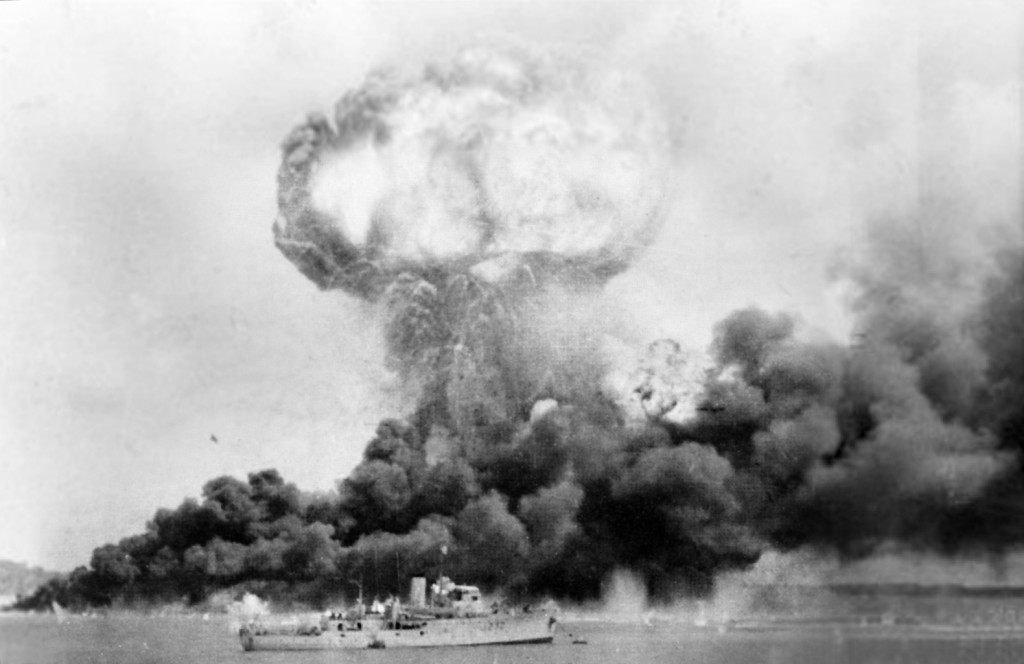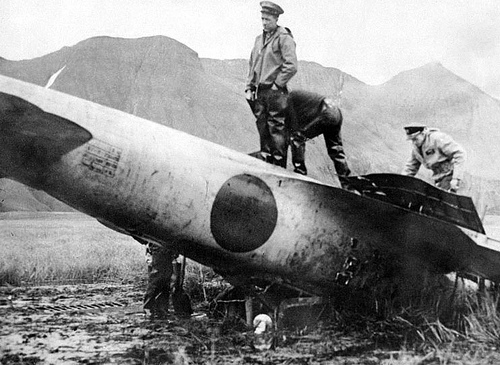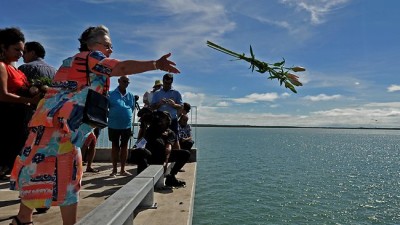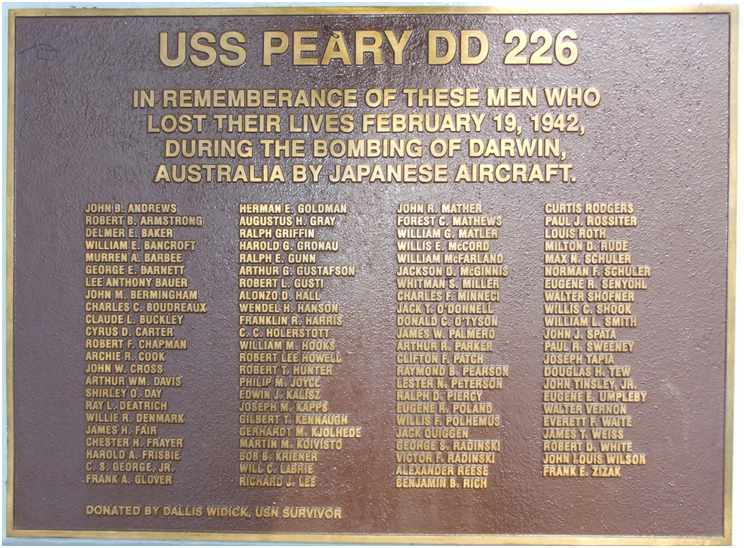Just before 10am on February 19, 1942, Darwin was attacked by the Japanese in the first of two air raids under the command of Naval Captain Mitsuo Fuchida, who had ten weeks earlier bombed Pearl Harbour.
Darwin, the largest population centre in northern Australia, was considered a vital asset in Australia’s defences against an increasingly aggressive Japanese Empire in the 1930s. Its port and airfield facilities were developed, coastal defence batteries constructed and its garrison steadily enlarged. The outbreak of war in the Pacific resulted in the rapid enlargement of the military presence in Darwin and it was used as a base from which to deploy forces for the defence of the Dutch East Indies. In January and February these forces were overwhelmed by Japanese landings, usually preceded by heavy air attacks.
The Japanese attacked Darwin in two waves using over 260 aircraft including mainly Mitsubishi attack fighters and Kawasaki bombers, descending on Darwin’s port and harbour, destroying 20 military aircraft and eight ships. The raids were the first two of 64 raids against the Darwin area and its nearby airfields, which bore the brunt of Japanese attacks on mainland Australia. The National Archives of Australia state that most of the city’s military and civil infrastructure was also blown to smithereens in what’s popularly known as “Australia’s Pearl Harbour”.
Overall, the attacks killed 252 Allied service personnel and civilians and injured between 300 and 400 military personnel and civilians. The Japanese had successfully brought Singapore to its knees just a few days before they set their sights on Darwin.
 Japanese air raid hits an oil storage tank in Darwin on 19 February 1942. HMAS Deloraine in the foreground
Japanese air raid hits an oil storage tank in Darwin on 19 February 1942. HMAS Deloraine in the foreground
When the raid commenced the USS Peary, a Clemson class destroyer, was at anchor in Darwin Harbour and preparing to take on fuel from the tanker, British Motorist. The crew did not have enough warning to raise the anchor and carry out any high-speed manoeuvres which may have saved her. Official records state the Peary was hit by five bombs. Only four exploded but it was enough to sink her. Peary sank stern first with more than half the crew losing their lives, either killed by explosions, burnt in the blazing oil that surrounded the ship, or drowned.

Including the captain, 92 were killed or missing, but only seven of the bodies were recovered. 57 men survived, of which 20 were wounded. There are reports of returning machine gun fire from the crew as she slipped beneath the oily waters of Darwin Harbour. This was the largest and most devastating raid on Darwin. It was the greatest loss of life on any of the ships sunk in the Japanese attack.

Five months later, a downed Mitsubishi A6M Zero-Sen is inspected by US Navy on Akutan Island on July 11, 1942. A good place for it.
On 3 March Broome, in Western Australia, was strafed. In succeeding months air attacks were made on many towns in northern Australia including Wyndham, Port Hedland and Derby in Western Australia, Darwin and Katherine in the Northern Territory, Townsville and Mossman in Queensland, and Horn Island in the Torres Strait. Subsequent raids in April, June, July and November 1942, and March 1943 were carried out with forces of 30 to 40 fighters and bombers. Between the large raids there were smaller operations by groups of under a dozen Japanese aircraft. Most of the raids occurred in daylight but there were some small-scale night attacks.
The 64th, and last, air raid on Darwin occurred on 12 November 1943. In total there were 97 air attacks on northern Australia and enemy air reconnaissance over the region continued through much of 1944.
Australian war history records that it was “the first time since European settlement that mainland Australia had been attacked by a foreign enemy”.
 Flowers for fallen in 2012 during the 70th anniversary commemoration of the loss of lives.
Flowers for fallen in 2012 during the 70th anniversary commemoration of the loss of lives.
There is a memorial in Darwin in honor of the lives lost. This memorial, in Bicentennial Park, consists of a plaque and one of the 4-inch deck guns recovered from the Peary. This gun is aimed towards the Peary ’s resting place in the harbor. In the words of Peter Grose, author of ‘An Awkward Truth: The Bombing of Darwin, February 1942’, “The doomed yet magnificent reply by the destroyer USS Peary in Darwin harbour as Japanese dive-bombers swarmed around her deserves a place in the legend books of American military history”.
 “USS Peary Memorial Darwin” by Turgan
“USS Peary Memorial Darwin” by Turgan
The Peary lies in 89 feet (27 m)[2] of water in Darwin Harbour. The wreck itself is a memorial to those who lost their lives in the first bombing raid on Australian soil and to those who defended Darwin.
This is where the ANZUS Alliance was born, particularly bonding the United States, Australia and New Zealand during World War II as Australia was coming under attack by a foreign power, Japan, for the first time in our history. When US President Obama visited Darwin in 2011 and addressed a RAAF hangar full of American Marines and Australian troops, he said he was proud to celebrate the 60th anniversary of the ANZUS alliance and couldn’t think of a better group to do it with.
“You are the backbone of our countries, some of the toughest people in the world,” he said. Americans and Australians had stood together since World War I, he said, but in a sense Darwin was where the alliance was born. It was the scene of Australia’s own Pearl Harbour, when the city was bombed by Japanese planes in February 1942.
“Against the odds we fought back. We picked ourselves up, dusted ourselves off and rebuilt,” he said, going on to score decisive victories in the battle of the Coral Sea, Midway and Milne Bay.

Arguably, if it had not been for the support of the United States in the Pacific War, Aussies may well be speaking Japanese today, and slaves of Japan.
In Canberra, there is a fitting memorial and important symbol of Australian gratitude to American service personnel for their contribution to the defence of Australia during World War II. Affectionately known as ‘The Eagle’, it also signifies the close ties established between Australia and America during the war.
The 79 metre high memorial, designed in 1949 by architect Mr Richard Ure, features an aluminium-clad column topped by a triumphant eagle. The stylised eagle and sphere was developed by sculptor Mr Paul Beadle. In 1950, the Australian people raised £63,000 in six weeks to help build the memorial. Construction commenced in January 1953 and was completed in 1954. The Memorial was unveiled by Her Majesty Queen Elizabeth II on the 16th of February, 1954.
Today, the Memorial is a testament to the close relationship between Australia and United States, and is an iconic feature of the Canberra landscape.
